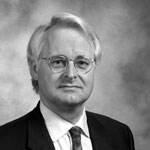 In 1956, Alexander Grothendieck (middle) introduced $\lambda $-rings in an algebraic-geometric context to be commutative rings A equipped with a bunch of operations $\lambda^i $ (for all numbers $i \in \mathbb{N}_+ $) satisfying a list of rather obscure identities. From the easier ones, such as
In 1956, Alexander Grothendieck (middle) introduced $\lambda $-rings in an algebraic-geometric context to be commutative rings A equipped with a bunch of operations $\lambda^i $ (for all numbers $i \in \mathbb{N}_+ $) satisfying a list of rather obscure identities. From the easier ones, such as
$\lambda^0(x)=1, \lambda^1(x)=x, \lambda^n(x+y) = \sum_i \lambda^i(x) \lambda^{n-i}(y) $
to those expressing $\lambda^n(x.y) $ and $\lambda^m(\lambda^n(x)) $ via specific universal polynomials. An attempt to capture the essence of $\lambda $-rings without formulas?
Lenstra’s elegant construction of the 1-power series rings $~(\Lambda(A),\oplus,\otimes) $ requires only one identity to remember
$~(1-at)^{-1} \otimes (1-bt)^{-1} = (1-abt)^{-1} $.
Still, one can use it to show the existence of ringmorphisms $\gamma_n~:~\Lambda(A) \rightarrow A $, for all numbers $n \in \mathbb{N}_+ $. Consider the formal ‘logarithmic derivative’
$\gamma = \frac{t u(t)’}{u(t)} = \sum_{i=1}^\infty \gamma_i(u(t))t^i~:~\Lambda(A) \rightarrow A[[t]] $
where $u(t)’ $ is the usual formal derivative of a power series. As this derivative satisfies the chain rule, we have
$\gamma(u(t) \oplus v(t)) = \frac{t (u(t)v(t))’}{u(t)v(t)} = \frac{t(u(t)’v(t)+u(t)v(t)’}{u(t)v(t))} = \frac{tu(t)’}{u(t)} + \frac{tv(t)’}{v(t)} = \gamma(u(t)) + \gamma(v(t)) $
and so all the maps $\gamma_n~:~\Lambda(A) \rightarrow A $ are additive. To show that they are also multiplicative, it suffices by functoriality to verify this on the special 1-series $~(1-at)^{-1} $ for all $a \in A $. But,
$\gamma((1-at)^{-1}) = \frac{t \frac{a}{(1-at)^2}}{(1-at)} = \frac{at}{(1-at)} = at + a^2t^2 + a^3t^3+\ldots $
That is, $\gamma_n((1-at)^{-1}) = a^n $ and Lenstra’s identity implies that $\gamma_n $ is indeed multiplicative! A first attempt :
hassle-free definition 1 : a commutative ring $A $ is a $\lambda $-ring if and only if there is a ringmorphism $s_A~:~A \rightarrow \Lambda(A) $ splitting $\gamma_1 $, that is, such that $\gamma_1 \circ s_A = id_A $.
In particular, a $\lambda $-ring comes equipped with a multiplicative set of ring-endomorphisms $s_n = \gamma_n \circ s_A~:~A \rightarrow A $ satisfying $s_m \circ s_m = s_{mn} $. One can then define a $\lambda $-ringmorphism to be a ringmorphism commuting with these endo-morphisms.
The motivation being that $\lambda $-rings are known to form a subcategory of commutative rings for which the 1-power series functor is the right adjoint to the functor forgetting the $\lambda $-structure. In particular, if $A $ is a $\lambda $-ring, we have a ringmorphism $A \rightarrow \Lambda(A) $ corresponding to the identity morphism.
But then, what is the connection to the usual one involving all the operations $\lambda^i $? Well, one ought to recover those from $s_A(a) = (1-\lambda^1(a)t+\lambda^2(a)t^2-\lambda^3(a)t^3+…)^{-1} $.
For $s_A $ to be a ringmorphism will require identities among the $\lambda^i $. I hope an expert will correct me on this one, but I’d guess we won’t yet obtain all identities required. By the very definition of an adjoint we must have that $s_A $ is a morphism of $\lambda $-rings, and, this would require defining a $\lambda $-ring structure on $\Lambda(A) $, that is a ringmorphism $s_{AH}~:~\Lambda(A) \rightarrow \Lambda(\Lambda(A)) $, the so called Artin-Hasse exponential, to which I’d like to return later.
For now, we can define a multiplicative set of ring-endomorphisms $f_n~:~\Lambda(A) \rightarrow \Lambda(A) $ from requiring that $f_n((1-at)^{-1}) = (1-a^nt)^{-1} $ for all $a \in A $. Another try?
hassle-free definition 2 : $A $ is a $\lambda $-ring if and only if there is splitting $s_A $ to $\gamma_1 $ satisfying the compatibility relations $f_n \circ s_A = s_A \circ s_n $.
But even then, checking that a map $s_A~:~A \rightarrow \Lambda(A) $ is a ringmorphism is as hard as verifying the lists of identities among the $\lambda^i $. Fortunately, we get such a ringmorphism for free in the important case when A is of ‘characteristic zero’, that is, has no additive torsion. Then, a ringmorphism $A \rightarrow \Lambda(A) $ exists whenever we have a multiplicative set of ring endomorphisms $F_n~:~A \rightarrow A $ for all $n \in \mathbb{N}_+ $ such that for every prime number $p $ the morphism $F_p $ is a lift of the Frobenius, that is, $F_p(a) \in a^p + pA $.
Perhaps this captures the essence of $\lambda $-rings best (without the risk of getting an headache) : in characteristic zero, they are the (commutative) rings having a multiplicative set of endomorphisms, generated by lifts of the Frobenius maps.
Comments closed However, as
However, as